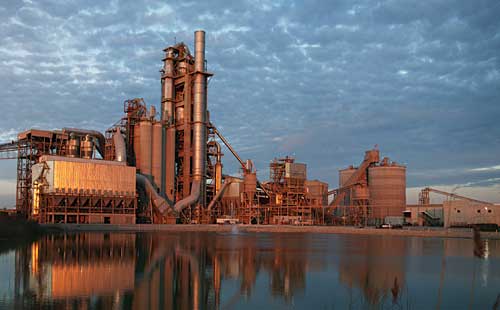Building Even Better Concrete
Learning Objectives:
- Explain the cement manufacturing process.
- Discuss the role of supplementary cementitious materials in concrete construction.
- Discuss research and innovations in cement and concrete.
Credits:
Concrete is the most widely manufactured material, with nearly three tons produced each year for each of the earth's inhabitants. Architects value concrete for its durability, compressive strength, versatility, and expressive possibilities. However, production of cement, the fundamental ingredient in concrete, accounts for 5 percent of man-made carbon dioxide (CO2) emissions globally, according to the cement-sustainability initiative, a group of international manufacturers.
The industry is making efforts to mitigate this impact. In the U.S., for example, where cement production accounts for less than 1.5 percent of U.S. CO2 emissions, according to the Portland Cement Association (PCA) estimates, manufacturers have adopted voluntary performance-improvement targets. Their goals include increasing energy efficiency 20 percent by 2020 when compared with a 1990 baseline, and on the same time line, to reducing CO2 emissions by 10 percent per ton of product.
On the first goal, the domestic cement industry has already made significant progress, with a 12 percent reduction in energy use, according to a survey of U.S. and Canadian cement plants conducted annually by PCA. The trade association is now analyzing data relating to its CO2 goals, but early assessments indicate that manufacturers are well on their way to meeting emissions targets, according to Andy O'Hare, the group's vice president of regulatory affairs.
But the kind of reductions necessary to counter rising demand from emerging economies like China and India may be hard to come by, simply because of the chemistry and physics involved in cement production, which is a multistep process. To make portland cement-the binder in most concrete, typically referred to simply as cement-manufacturers first collect limestone and other raw materials, such as sand, shale, iron ore, and clay, from quarries. These materials are analyzed, blended, and ground.
|
The next step expends the most energy and adds the most to greenhouse-gas production: The combined ingredients are heated at temperatures up to 3,400 degrees in a kiln where the components react and partially fuse. This chemical reaction, known as calcination, produces a marble-size substance called clinker, that is then cooled and ground with small amounts of gypsum and limestone to produce cement. Mixing the cement with sand, aggregates, and water produces concrete.
Calcination and the burning of fossil fuel required to maintain the kiln at the necessary high temperatures are responsible for about 95 percent of the greenhouse-gas emissions generated by cement manufacturing, according to O'Hare. Although manufacturers are tackling fossil-fuel consumption with strategies such as heat exchange and energy recovery from waste materials such as tires and biomass, the greenhouse gases associated with calcination will be harder to crack. "These emissions are almost impossible to reduce unless we find a substitute for limestone," says O'Hare.










